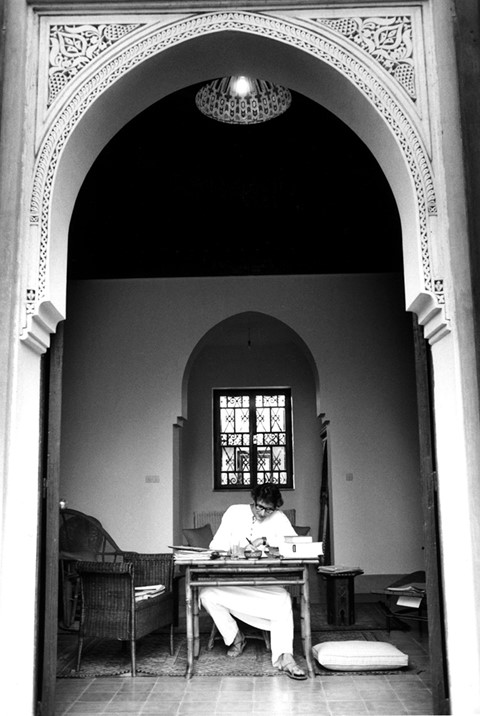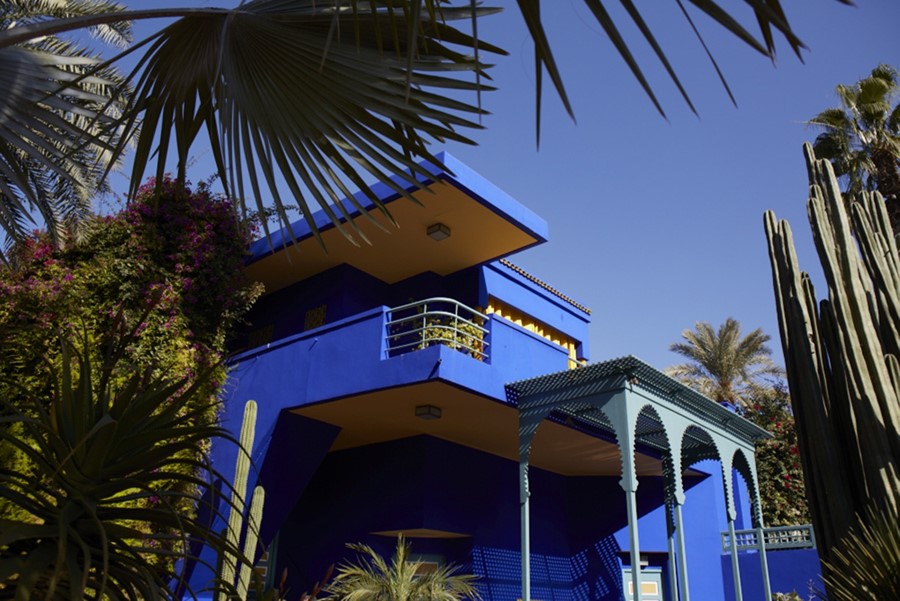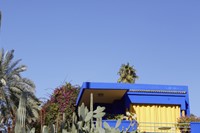Wandering through the Jardin Majorelle in Marrakech, AnOther discovers much of the heart of Yves Saint Laurent's inspiration
Yves Saint Laurent and Pierre Bergé first visited Marrakech in 1966, when the city was still a quiet oasis in the shadow of the Atlas mountains. First staying in La Mamounia, the legendary hotel that hosted Winston Churchill and later a phalanx of stars from the music and film industries, they quickly fell in love with the city and decided to buy a property. Their first was in the Medina, the historic walled citadel with its buzzing markets and narrow winding streets, and was called the House of Snakes. But this was soon largely abandoned when they discovered the beautiful garden of Jardin Majorelle, which they purchased in 1980. According to Quito Fierro, head of communications at Jardin Majorelle, Saint Laurent, who was born in Algeria, immediately felt at home in the Arabic city. “Marrakech became not only a holiday place but was a big inspiration for Yves Saint Laurent in terms of fabrics and colours. He was only using black and white before in his design.”
“Marrakech became not only a holiday place but was a big inspiration for Yves Saint Laurent in terms of fabrics and colours"
The garden is situated on what is now Rue Yves Saint Laurent, in a peaceful enclave of the city. Inside, rare cacti, bright bougainvillea and luscious palms rustle in the desert breeze and form a canopy against the heat of the Moroccan sun. Beneath the leaves are a network of shady pathways, fountains and ponds, strategically lit up by occasional rays of brilliant sunlight. The garden originally belonged to the French painter Jacques Majorelle, who landscaped it in the 30s; after his death, it was opened to the public but soon fell into disrepair. In 1980, on hearing it was to be razed to make way for a development, Saint Laurent and Bergé resolved to buy it, opening the garden to the public and keeping a spectacular private residence called Villa Oasis, which Bergé continues to use to this day. Built in the 20s, the villa was restored by Saint Laurent with the help of American interior designer Bill Willis, a dapper figure from Memphis who came to the city in the 1960s to decorate Talitha Getty's sprawling 18th century palace, the Palais de la Zahia; a task he would perform for both of its subsequent owners, first Alain Delon, and then Bernard-Henri Lévy.

“They created the myth of Marrakech in the late sixties, seventies,” says Fierro of this collection of itinerant luminaries, including Saint Laurent, various Rolling Stones and the Gettys. “It took many years for the Moroccans to understand Marrakech. It was really this group of people, because they fell in love with the local culture and bought it to the outside world.” After Saint Laurent died, his ashes were brought to the city and buried in his private garden, with a special memorial standing in the public garden, visited annually by around 700,000 people. As Fierro explains, now Yves Saint Laurent feels as much a part of Morocco and the Moroccans as Marrakech was to him.
Text by Laura Allsop






